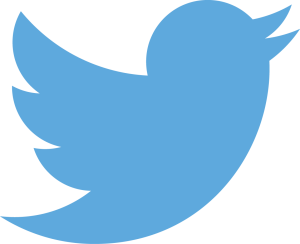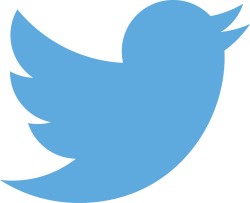 As I said in a recent blog, called the awesome power of Tweet tags, I am still a huge fan of Twitter. As I said in that blog, I still get so much more out of Twitter than Facebook, professionally:
As I said in a recent blog, called the awesome power of Tweet tags, I am still a huge fan of Twitter. As I said in that blog, I still get so much more out of Twitter than Facebook, professionally:
- I get a great sense of what folks are doing in the areas of expertise and work I care about most
- I can easily find and connect with amazing experts in areas of expertise and work in which I’m intensely interested
- I can find what I’m looking for and easily screen out what I don’t care about
- When I tweet, I get replies and retweets and even requests for more info – real engagement – as well as traffic to my blog and web site
Of course you should follow me on Twitter: @jcravens42
But you should also be aware of another way to leverage Twitter for your nonprofit, government or other mission-based organization or program: creating and sharing Twitter lists, where you curate accounts based on some aspect of your program’s mission or location. For instance:
- an animal shelter should have a public Twitter list of other shelters and animal rescue groups in the area, and another list of accounts tweeting credible information regarding animal care and training
- a small college or university should have a Twitter list of its own departments, faculty and students using Twitter to talk about their university work
- a police department should have a Twitter list of other law enforcement agencies in the area and nearby, and another list of accounts by nonprofits addressing issues that contribute to crime prevention (homeless shelters, drug treatment centers, programs to help teens, etc.)
- a city office should have a Twitter list of other city offices
- a public school should have a Twitter list of registered nonprofits in the area focused on youth
- a water and sanitation program in a developing country should have a Twitter list of similar programs in other countries, so staff can look for ideas they can use in their own area, and have a list of programs and organizations in-country that have funded or might fund the WATSAN program
- an association of managers of volunteers should have a list of all of the nonprofits in the area with Twitter accounts, another list of all student groups at local colleges and universities in the area that regularly engage in public service, and another list of all civic groups in the area using Twitter.
Creating Twitter lists and sharing them with the public affirms an organization’s mission, establishes a program as a leader regarding that mission, creates valuable resources for people you are trying to serve, and creates another way for you to attract Twitter followers. It also makes it much easier for you to be able to check in with what’s happening with specific audiences – instead of following them all on Twitter, you put accounts on lists, and then read those lists when it’s time to catch up on a particular area of interest to you.
Here’s a good example: Northwest Oregon Volunteer Administrators Association (NOVAA) has several Twitter lists. One is made up of nonprofits in the greater Portland, Oregon area that tweet, a list of people tweeting about the management of volunteers, and a list of people and organizations that tweet about volunteerism and volunteer recruitment. By having such lists and sharing them with the public, NOVAA is helping promote its brand as an organization that can help organizations in the area, including nonprofits, schools and government agencies, regarding effective volunteer engagement. What would be great is if they also had a list of all public officials in the area, or that represent the area, that are on Twitter, so that they could easily follow what those people might be saying regarding volunteers and NOVAA members could more easily contact those representatives regarding volunteerism.
Here’s another good example: United Way of the Columbia-Willamette, also in Portland, Oregon. One of its Twitter lists is of its partner organizations on Twitter. Another list is of organizations focused on helping people and families work towards financial stability. Like NOVAA, they also have compiled a list of nonprofits in the greater Portland, Oregon area that tweet. So UW is using its Twitter lists to both promote nonprofits in the area and help people in the area find the services at nonprofits they need – in short, they are using Twitter lists as a part of their mission to “improve lives, strengthen communities and advance equity by mobilizing the caring power of people across our metro area.”
Here’s how it works for me: I maintain several public Twitter lists – lists of people and organizations that regularly tweet about subjects of interest to me. These lists affirm my areas of expertise and my interests as a professional, help establish me as a leader regarding some of these areas, and create valuable resources for people and organizations with whom I want to connect in some way. It also cuts down on how many people I have to follow on Twitter; instead, I can put people and organizations on various lists, by subject matter, geography, whatever, and then check in with those lists as I like. I pick one or two of my lists a day, and then spend a few minutes going through the tweets of that list.
For instance, there’s my Tech4Good ICT4D, a list of people and organizations that regularly tweet regarding computers and the Internet used to help people, communities and the environment. Or my ework evolunteer list, which tracks people and programs tweeting about telework, telecommuting, remote work, virtual teams, distributed teams, virtual volunteering, etc. Or my CSR list, which is made up of corporations that tweet about their philanthropic and social responsibility activities, and people and organizations that tweet regarding corporate social responsibility. My several public Twitter lists become both ways to brand my interests and expertise as well as a way to offer resources that others might find useful.
Take Twitter to the next level: make it not only an outreach and engagement tool, make it something that promotes your program through the lists you curate!
Also see:






